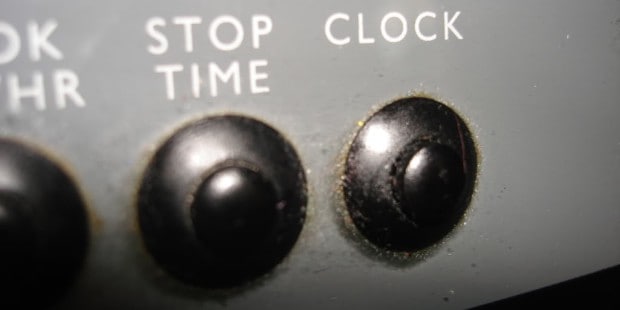 One of the biggest barriers when it comes to productivity is the notion that we simply “don’t have enough time”. With all of the responsibilities and flow of communication and information coming our way, there’s good reason that this notion exists – and his held by many.
One of the biggest barriers when it comes to productivity is the notion that we simply “don’t have enough time”. With all of the responsibilities and flow of communication and information coming our way, there’s good reason that this notion exists – and his held by many.
But there’s a way to escape that notion. (After all, it just a notion.)
How do we do this? We have to stop time.
Much of our work is ruled by deadlines. We have due dates and we are to finish our work by those dates. Sometimes we are given such work far in advance, sometimes we are given it with little to no notice, and sometimes the work is part of a greater routine we follow on a regular basis. Regardless, all of this work is generally ruled by time.
In order to be more productive and get to the good stuff – the stuff that we really want to do – we have to stop using this mindset. We have to stop focusing on being ruled by time and have to focus on being ruled by task instead. That’s the only way we can really get ahead and get to the important stuff on our lists. Being ruled by time leaves you dealing with items of urgency. Being ruled by task allows you to deal with items of importance.
Shifting from a Time Mindset to a Task Mindset
The first thing you need to do when making a shift in your mindset like this is to stop focusing on what the end will look like and start focusing on what the next move will look like. This may fly in the face of what many say you need to do in order to cross the finish line, but visualizing isn’t enough. You need to take small steps rather than huge leaps, and when you focus on the task at hand instead of the time on hand you’ll be better equipped to do that.
For example, when in school you have been given plenty of opportunity throughout the year to study for finals. But many people cram everything into those final weeks, days and hours instead. That’s because they know that they really don’t have to do anything until closer to the end, so they don’t. But by studying incrementally over the long haul, the chance of retention is greater – as is the chances of a better quality result.
The GTD methodology is broken down into several components, but the biggest problem people have with it is identifying what might be a project instead of a task. Numerous productivity sites have discussed this at length, and yet the problem persists. That’s because people still look at how long a project will take to complete as a whole rather than breaking it down into actionable items that can be done over time. The first approach often means more cramming and less reflection, which is never the best road to take.
The ideal scenario for one’s personal productivity is to be both efficient and effective – not forsaking one for the other.
Task management and time management are very different. Knowing what you have to do and knowing how much time you have to do what it is you have to do require different mentalities. You need to learn how to manage your tasks first, then you’ll be in a far better position to manage your time.
In fact, by doing the former you may not have to do much of the latter.
So stop worrying about due dates and start making every date a “do date”. Stop tracking your time spent and start tracking what you do in the time you have. Pay more attention to the “what” and less attention to the “when”. That’s how you stop time in its tracks.
And it’s also how you start moving more efficiently and effectively down the right track.
Photo credit: Song and Solace

